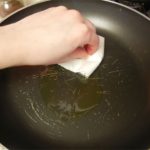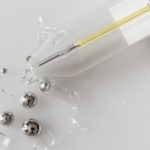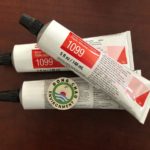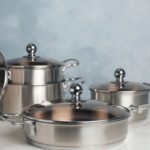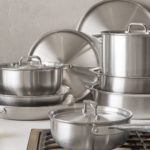Non-stick pans get their smooth, non-stick surface from a coating of Teflon. The adhesive used to bond the Teflon to the pan can be harmful, and this has raised concerns among some users. This adhesive can break down when exposed to high temperatures during cooking, releasing toxic substances.

1. Washing the pan immediately after cooking without letting it cool down
A common habit is to immediately rinse the pan after cooking. While this may be fine for other types of pans, it’s a big no-no for non-stick pans.
The sudden change in temperature from hot to cold can cause thermal shock, leading to warping or the non-stick coating peeling off.
If your pan has stubborn burnt-on residue, try soaking it in warm soapy water instead of scrubbing it vigorously. Avoid soaking the pan for extended periods or overnight.

2. Heating an empty non-stick pan
Unlike aluminum or cast iron pans, where you add oil after heating, non-stick pans require the opposite approach. Always add oil to the pan before placing it on the stove. Heating an empty non-stick pan can significantly reduce its lifespan.

Note: When cooking, use low to medium heat to prolong the life of the non-stick coating.
3. Using metal utensils to stir food
Metal is the number one enemy of non-stick pans. Even if the pan is made of thick, pure aluminum or has multiple non-stick coatings, the non-stick surface can still be damaged by metal utensils.

Avoid using metal spoons, forks, or spatulas to stir food or cut food directly in the pan. Instead, opt for wooden, silicone, or bamboo utensils.

4. Misusing the pan for purposes other than cooking
• Storing food in the pan
It’s convenient to leave cooked food in the pan for the day, especially if you plan to reheat it later. However, pans are meant for cooking, not food storage. This is especially true for acidic foods like tomatoes or citrus fruits, which can degrade the pan’s surface and affect the food’s quality.
• Grilling food
High-heat grilling can damage the non-stick coating, causing it to peel and exposing the adhesive layer. If you must grill on a non-stick pan, use low heat, and avoid leaving the empty pan on the stove for too long. Also, avoid grilling foods that don’t release oil, such as seafood, vegetables, or lean meats.

• Cooking stews
The high concentration of salt and spices in stews can damage the non-stick surface, causing it to pit or deteriorate. Manufacturers also advise against adding salt directly to the pan during cooking.

Finally, if your non-stick pan becomes scratched or the black coating starts to peel, it’s time to replace it with a new one.
According to Pháp luật và bạn đọc

























